Perennial plants have been a favorite in gardens since the first days of the cottage garden, when the benefits of plants that were long lived, easily propagated and generally hardy due to their ability to survive winters by dying back to the ground were of importance to gardeners with little money to spend on gardening.
As our gardens evolved, so did our use of perennials. When I was a horticulture student in the 1960s, the traditional herbaceous border featured large in our garden design lectures. Today, no doubt, students learn more about the naturalistic prairie style of planting perennials, championed by Dutch garden designer Piet Oudolf and landscape architecture firm Oehme van Sweden. And now there is a third generation of perennial planting, best known by some garden designers — including Michael King, writer and perennials expert — as the “perennial meadow,” which uses the best parts of both the previous formats.
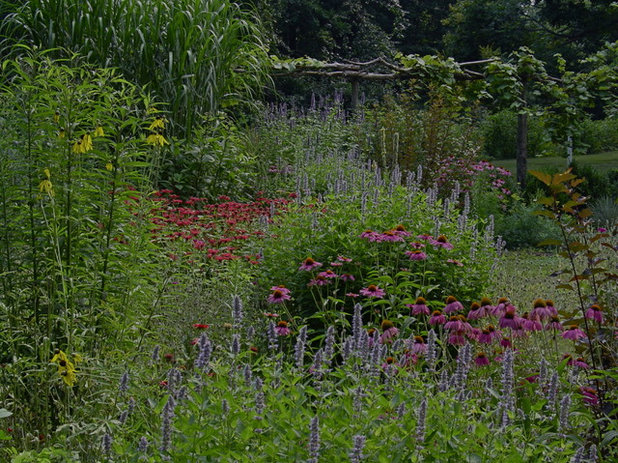
Brian Maloney Design Associates
The traditional perennial or herbaceous border combines a great variety of plants in drifts and swaths of color linked in a very stylized manner; the more naturalistic prairie style of planting has shown us how to incorporate grasses and perennials grown in conditions closer to those found in their natural state — using the right plants in the right place.
Modern perennial meadows are a mixture of colorful perennial plants and grasses that are planted in groups and drifts to create plantings in a naturalistic style, using a restricted planting palette and plants that happily grow together to form a stable community.
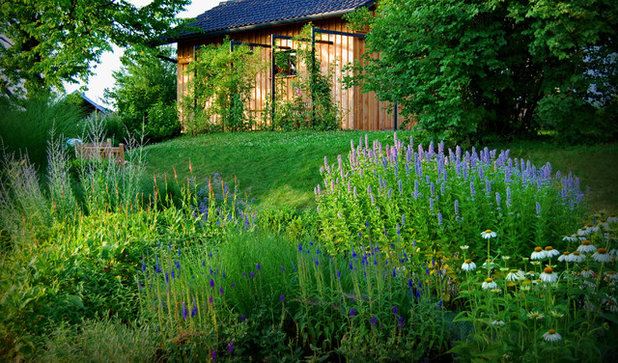
The perennial border popularized in Victorian gardens was labor intensive and very seasonal, requiring a great amount of horticultural skill to create a stunning kaleidoscope of summer color. Garden designer Gertrude Jekyll included intricate, colorful borders in many of her Arts and Crafts–style gardens. Maintaining these borders required splitting the perennial plants and replanting every three to four years to maintain their vigor, staking and tying to keep plants in order, and deadheading and weeding throughout the season to keep the border tidy.
The design of the perennial meadow has changed the way we interact with the plantings. Whereas the herbaceous border was created as a focal point, or a feature to be viewed, rather like a painting, the perennial meadow takes its form from the prairie style, where we are surrounded by the plantings or are led through them by pathways. The perennial meadow gives us the opportunity to use a wide range of plants and grasses to create a stylized version of a traditional meadow that perhaps has nostalgic resonance with our past.
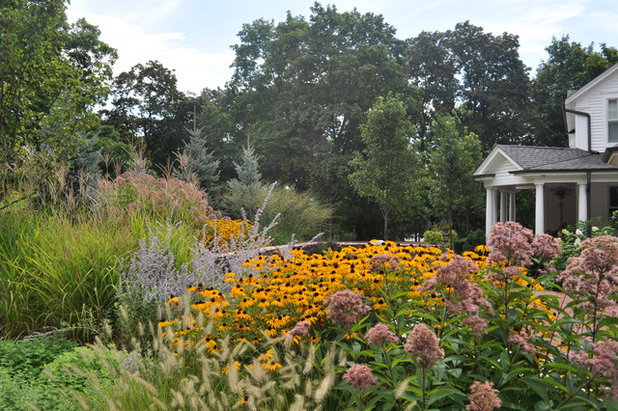
Milieu Design
Prairie planting, the second generation of perennial use in garden design, can be seen as a much freer form of planting, using a mixture of perennials and grasses in an open field or prairie. Though spectacular in larger spaces, like Queen Elizabeth Olympic Park, in London, or Lurie Garden, in Chicago, this style of perennial planting can seem formless in the small garden; it’s difficult to implement as a feature within a garden. Noel Kingsbury, coauthor of
The New Perennial Garden, does, however, suggest that strips of around 3 feet, or 1 meter, across can be planted to effect.
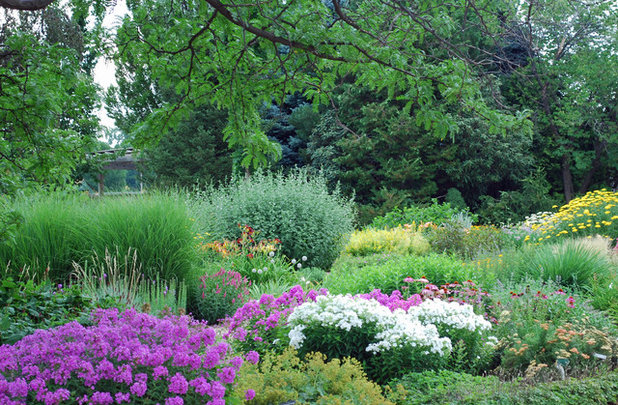
Jocelyn H. Chilvers
The planting of the perennial meadow is a lot freer than in the herbaceous border and prairie planting, with the accent on providing foliage and, especially, flower color through as long a season as possible. There is no attempt to emulate nature, as in prairie-style planting, but to create an association of plants that will happily grow together, in swaths and drifts, interlocking as they do in nature.
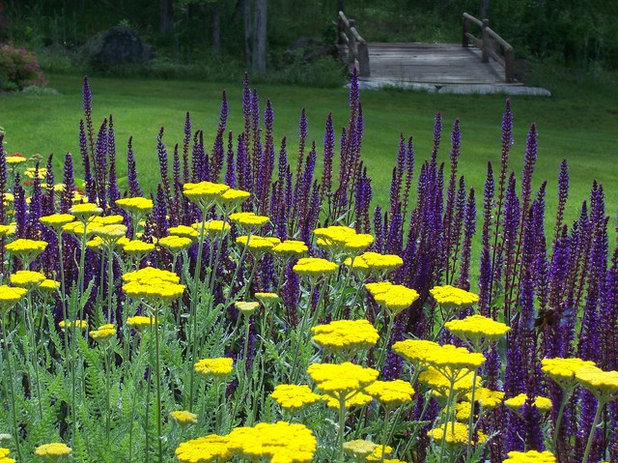
Dear Garden Associates, Inc.
Here we can see how drifts of intermingling plants almost emulate nature in the way they grow in this perennial-meadow style of planting. Both the
meadow sage (
Salvia x
sylvestris ‘May Night’) and
fernleaf yarrow (
Achillea x ‘Moonshine’) used here are improved cultivars of very common native plants that retain the natural form yet have better flower quality and a longer flowering season.
One of the benefits of this generation of planting is being able to use a wide range of plants, not necessarily native to the zone or country, but because they suit their position in the overall design.
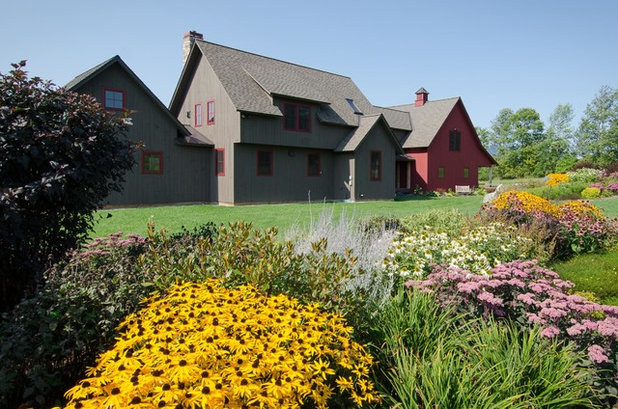
Moore Design Builders
Planting a perennial meadow requires the same skill in plant placement as other forms of planting do, including the techniques of grouping and repetition.
The black-eyed Susans and pink sedums in this long border are planted in groups and repeated, creating a visual link along the border. The planting is tight to form a low-maintenance ground cover that gives the impression of a living tapestry of color and texture. Because more modern compact varieties of perennials and tight plantings were used, there is little need for time-consuming tying, staking and weeding of plants in season.
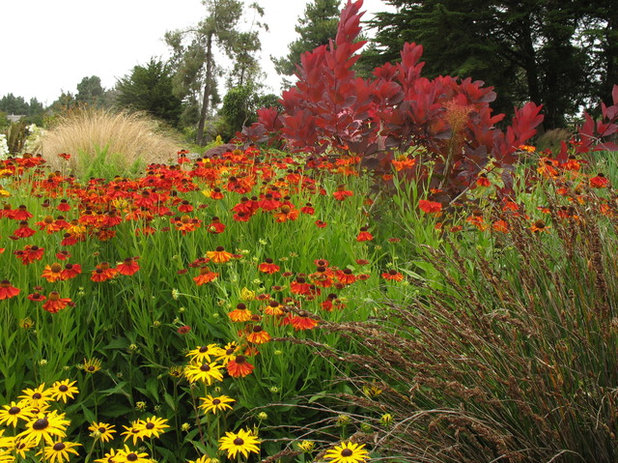
Le jardinet
Though not natural, as prairie planting also isn’t natural in the true sense, perennial-meadow-style planting can also have environmental benefits.
A mixture of grasses and flowering perennials provides habitat and food for a wide range of insects and birds, while having a low environmental impact. Any cutting back of flowering stems should not be carried out until the spring, to allow birds to enjoy the resulting seed heads while they use the dried foliage for nest building.
Learn more about this planting combination
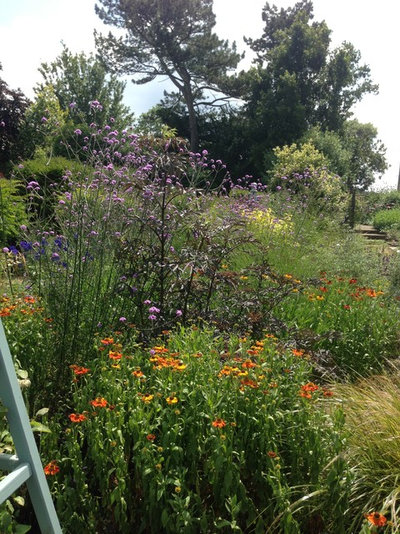
Earlier this summer I visited Bishopscourt, the garden of the Bishop of Rochester, in the southeast of England. At the rear of the garden, where there had once been a traditional parterre, now stands a wonderful example of a perennial meadow. Flowering perennials and tall grasses intermingle in a profusion of color.
This planting requires less maintenance than the traditional parterre would have, and provides color throughout a longer season and additional environmental benefits — on my visit the border was alive with butterflies feeding.
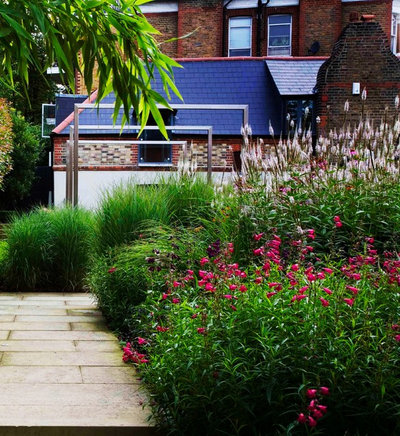
Laara Copley-Smith Garden & Landscape Design
Garden styles and systems can never be set in stone, and this includes the use of perennial plants. Future garden designers may choose to go back to the formal layout of the traditional herbaceous border and cast aside the more flowing lines of the perennial meadow. We may even see these styles combined, as with the long perennial border in the contemporary garden seen here.





